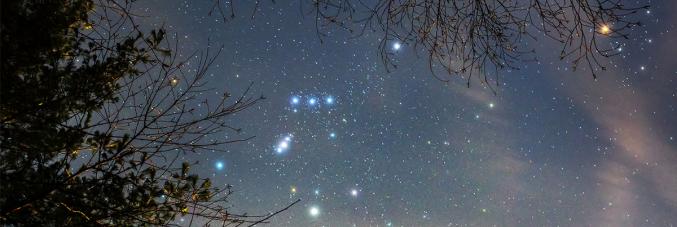
Binary stars: love and betrayal during the Big Bang
28.02.2020
The research team of astronomers led by Antonino Milone of the University of Padua has recently published a paper in "Monthly Notices of the Royal Astronomical Society". The paper discusses the behaviours of mixed binary stars and its existence which has been predicted through the use of numerical simulations. Published for the first time, this observation brings to light events that occurred in the primordial universe.
"Globular clusters (GCs)" are ancient isolated clusters of stars evenly distributed throughout the Milky Way formed by hundreds of thousands of stars that were born over thirteen billion years ago. For over half a century, astronomers believed that GCs were simple star systems simultaneously generated with the same proportions of helium and hydrogen. Recent developments in stellar astrophysics, which have been studied in large part over the last decade in Padua, have contradicted this simplistic version, rather discovering a completely unexpected property. Discovering the existence of multiple stellar population, or groups of distinct stars, which was not included under other stellar evolutionary theories.
The origin of multiple populations, together with its strange chemical composition, represents one of the main unsolved mysteries of stellar astrophysics. This new discovery could have major implications on the understanding of the formation of our galaxy. One of the distinctive features of CGs is its chemical composition. First-generation stars (1G) have a helium content similar to that of other stars in the Milky Way, while second-generation stars (2G) have a chemical abundance not observed anywhere else in our universe.
GCs are gravitationally linked binary stars are abundant, but the relationship between binary stars and multiple populations is still unclear. The group of researchers of the Physics and Astronomy Department of the University of Padua, scientifically coordinated by Antonino Milone, in collaboration with INAF of Padua and other international research bodies, has published an innovative study in the "Monthly Notices of the Royal Astronomical Society". This research focuses on understanding the behaviour of binary stars in relation to the presence of multiple populations. The published research was supported by ERC funds of the GALFOR project obtained in 2017 by Professor Antonino Milone.
GCs appear as spherical distributions of stars. Images obtained with the NASA and ESA Hubble Space Telescope, it was possible to identify hundreds of binary stars and reconstruct the historical component of each pair by carefully analysing the central regions of some spheres. The extraordinary quality of the images of the internal regions of the clusters, combined with new techniques introduced by the authors to analyse the data obtained, made it possible to clarify the connection between binaries and multiple populations and to know the population for which each star belonged.
The study explored multiple clusters and found differences between their evolutionary stories. Although numerical simulations had predicted the existence of mixed binaries, the methods used in this study made it possible to identify them for the first time. “This is the first time that the binaries have been observed. This discovery was made possible thanks to the extraordinary quality of the Hubble Space Telescope images, concludes Giacomo Cordoni, who at 23 years old is the youngest author of the research and studies globular clusters as part of the PhD at the Physics and Astronomy Department of Padua. “In practice, the fact that globular clusters are so ancient has offered us a unique opportunity to conduct stellar archaeology, and by studying its stars, we managed to shed some light on events that occurred in the early universe."



